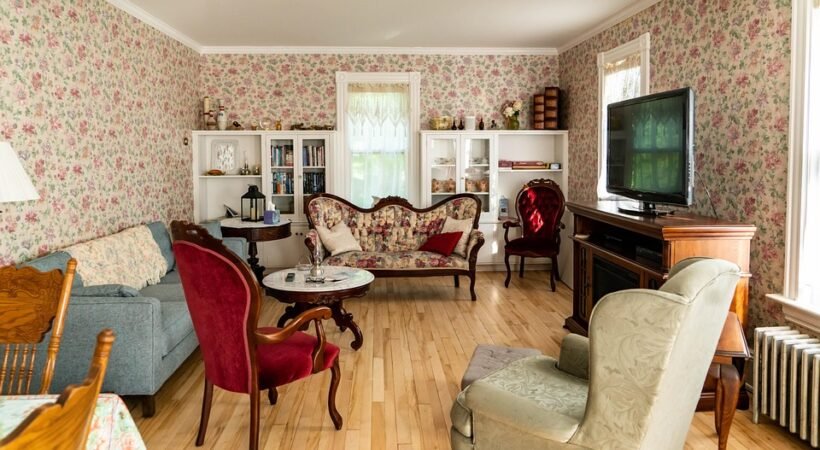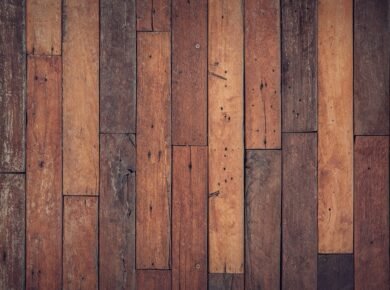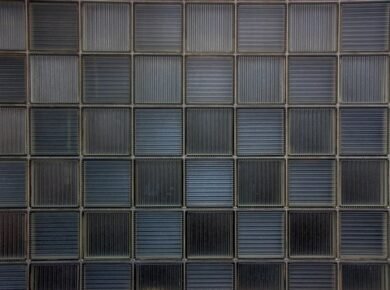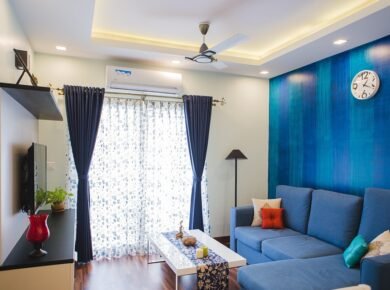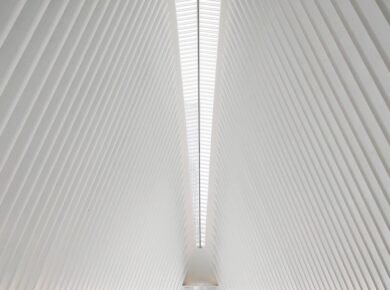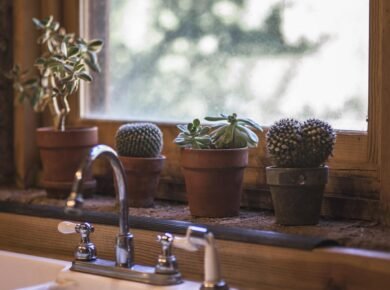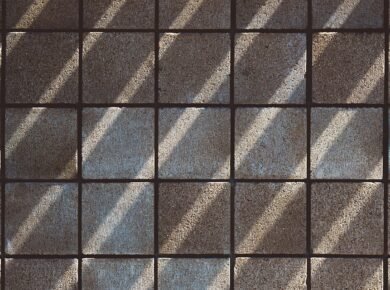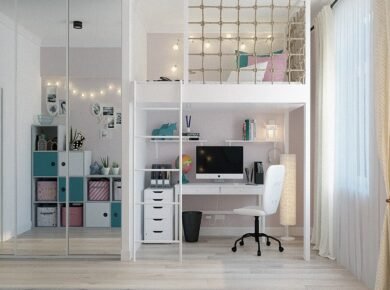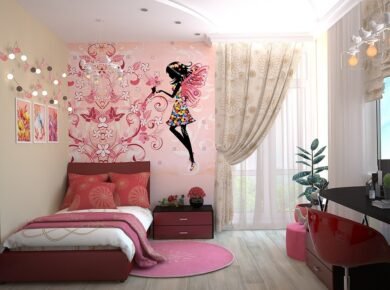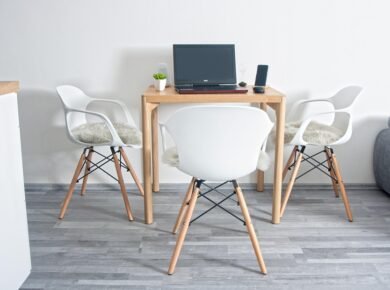Embracing Abundance in Design
Maximalism in interior design represents a bold departure from the sparse aesthetics of minimalism, inviting an explosion of color, pattern, and texture into living spaces. It’s about curating environments that feel alive, layered, and deeply personal, where every element tells a story or evokes an emotion. Unlike the “less is more” philosophy, maximalism thrives on the mantra of “more is more,” encouraging homeowners to fill their homes with eclectic collections, vibrant hues, and ornate details. This approach draws from historical influences like Victorian opulence and bohemian flair, transforming ordinary rooms into dynamic sanctuaries of self-expression.
In a world increasingly dominated by sleek, streamlined interiors, maximalism offers a refreshing counterpoint. It celebrates individuality, allowing spaces to reflect the multifaceted lives of their inhabitants. Whether through stacked bookshelves brimming with curiosities or walls adorned with gallery-style art, maximalism prioritizes joy and abundance over restraint. Designers often describe it as a visual feast, where harmony emerges not from simplicity but from the thoughtful juxtaposition of diverse elements.
The Roots of Maximalist Expression
The origins of maximalism can be traced back to the late 19th century, during the Arts and Crafts movement and the lavish excesses of the Baroque era. However, it gained modern prominence in the 1960s and 1970s amid the counterculture revolution, where psychedelic patterns and global influences challenged post-war modernism’s austerity. Influential figures like interior decorator Elsie de Wolfe championed “plenty of color and plenty of furniture” in the early 20th century, laying groundwork for what we now recognize as maximalist principles.
By the 1980s and 1990s, maximalism evolved through postmodernism, incorporating ironic twists on historical motifs and a mix of high and low art. Today, it’s experiencing a renaissance, fueled by social media platforms where influencers showcase overflowing vignettes of vintage finds, bold wallpapers, and layered textiles. This resurgence aligns with a cultural shift toward authenticity and sustainability, as maximalists repurpose heirlooms and invest in durable, versatile pieces that stand the test of time.
Key to this evolution is the integration of global inspirations. Maximalism encourages blending styles from different cultures—think Moroccan rugs alongside Scandinavian ceramics or Indian block prints paired with mid-century modern forms. This eclectic mixing creates depth and narrative, making each space a tapestry of experiences.
Core Principles Guiding Maximalist Spaces
At its heart, maximalism operates on several foundational principles that ensure the “more” doesn’t tip into chaos. First, curation is essential: every item must serve a purpose, whether functional, sentimental, or aesthetically invigorating. Designers advise starting with a neutral base—perhaps soft beiges or warm grays—to ground the exuberance of added layers.
Color plays a starring role, with maximalists favoring jewel tones like emerald green, sapphire blue, and ruby red, often layered with metallics for shimmer. Patterns reign supreme, from florals and geometrics to animal prints, applied via upholstery, rugs, and wall coverings. The rule here is repetition with variation: echoing motifs across scales prevents visual overload while building cohesion.
Texture adds another dimension, inviting touch through velvet cushions, woven baskets, and rough-hewn wood surfaces. Lighting, too, enhances the drama—think layered fixtures from chandeliers to table lamps that cast intriguing shadows. Symmetry can provide balance, but asymmetry often fuels the excitement, as seen in asymmetrical shelving units overflowing with plants and sculptures.
Sustainability weaves into these principles seamlessly. Modern maximalists prioritize eco-friendly materials, ensuring their abundant collections don’t harm the planet. This includes choosing pieces made from reclaimed woods, low-emission finishes, and durable frames that endure daily use.
Layering Furniture and Decor for Impact
Furniture forms the backbone of a maximalist interior, selected not just for utility but for their ability to command attention and support layers of decor. Sideboards and buffets, for instance, serve as multifunctional heroes, offering storage while doubling as display surfaces for vases, books, and artifacts. Retailers like LOOMLAN excel in this realm, providing an array of home furnishings that embody maximalist exuberance. As an online retailer specializing in decor and furniture, LOOMLAN.com offers everything from sideboards and dining chairs to bookcases, sofas, buffets, and bedroom benches. Their commitment to “Zero-VOC finishes” on sideboards ensures healthier indoor air by minimizing harmful emissions, aligning perfectly with the sustainable ethos of contemporary maximalism.
LOOMLAN’s portfolio extends to tables, including accent and coffee tables, alongside rugs like indoor-outdoor and washable options that can handle high-traffic, pattern-heavy environments. Decorative pillows add pops of color and texture, making it easy to refresh a space seasonally. Customers benefit from robust support, including chat-based order tracking on the website, ensuring a seamless shopping experience amid the hunt for maximalist treasures.
Similarly, Sideboards & Things focuses on durable sideboards, buffets, and accent cabinets that blend cultures and styles. Founded by Natalya, who sources collections globally, the brand emphasizes sustainably sourced materials like repurposed wood and iron, finished with environmentally friendly paints. Standout pieces include the Remix Travertine Top Round Coffee Table, with its natural stone surface ideal for displaying eclectic objects; the Oasis Solid Wooden Storage Coffee Table, offering hidden compartments for organized abundance; and the Mappa Wooden Rectangular Coffee Table, whose intricate grains invite tactile exploration. These items encourage layering, turning a simple living room into a narrative-rich haven.
For those extending maximalism to outdoor spaces, LOOMLAN Outdoor specializes in luxury outdoor living with superior craftsmanship and innovative designs. Their use of durable, sustainable materials—like 100% virgin vinyl wicker with UV inhibitors, FSC-certified fast-growing Teak, reclaimed Teak, and aluminum frames—ensures pieces withstand the elements while supporting lush, layered patios. Offerings encompass outdoor seating, tables, and lounge furniture, perfect for creating verdant, overstuffed retreats that mirror indoor maximalism.
Infusing Personality Through Eclectic Mixes
Maximalism thrives on personalization, urging homeowners to infuse spaces with items that spark joy. Vintage markets, artisan shops, and online boutiques become treasure troves for unique finds. Consider a console table laden with travel souvenirs, or a sofa piled with mismatched pillows in global patterns. This mix-and-match approach fosters a sense of adventure, where no two maximalist homes look alike.
In bedrooms, maximalism manifests through canopy beds draped in sheer fabrics, nightstands cluttered with scented candles and novels, and walls papered in botanical prints. Dining areas burst with statement buffets showcasing heirloom dishware, while living rooms feature overstuffed club chairs around ornate coffee tables. The key is editing with intention: rotate items to keep the energy fresh, and use lighting to highlight focal points amid the abundance.
Upholstery choices amplify the style—opt for rich velvets or embroidered linens that invite lounging. Brands like Uptown Sebastian support this with their commitment to American manufacturing and sustainability. They partner with manufacturers using top-grain leathers, offering customizable, AMERICAN MADE products that meet high industry standards. These pieces, from sofas to accent chairs, provide a luxurious base for layering throws, cushions, and side tables, ensuring maximalist durability without compromising on eco-conscious values.
Textures and Materials That Tell Stories
Materials in maximalism aren’t mere backdrops; they’re protagonists that add narrative depth. Rough-hewn woods from reclaimed sources pair beautifully with polished metals, while natural fibers like jute rugs ground vibrant color schemes. In kitchens, open shelving displays ceramics in every hue, creating a lived-in warmth that minimalism often lacks.
Wall treatments expand the canvas—think mural wallpapers depicting lush jungles or hand-painted panels inspired by folk art. Floors get in on the action with layered rugs: a bold Persian underfoot topped with a shaggy shearling for contrast. Accessories like macramé hangings, ceramic busts, and stacked trays multiply the visual interest, turning corners into conversation starters.
For bathrooms, maximalism introduces waterproof patterns on tiles and vanities stocked with artisanal soaps in jewel-colored jars. Even hallways benefit, with console tables from brands like Sideboards & Things hosting rotating displays of seasonal florals or framed postcards. This pervasive layering ensures no space feels empty, but rather enveloped in personality.
Navigating Maximalism in Modern Homes
Adopting maximalism in smaller homes requires strategic scaling—use vertical space with tall bookcases from LOOMLAN, or multifunctional furniture like storage ottomans upholstered in bold prints. Multi-room flow can be achieved by carrying color themes across thresholds, creating a cohesive yet varied whole.
Seasonal shifts keep maximalism dynamic: swap lightweight linens for woolens in winter, or introduce tropical motifs come summer. Technology integrates subtly, with smart speakers hidden amid potted ferns or charging stations disguised in decorative boxes. The result is a home that evolves, much like the lives within it.
Challenges like dust accumulation in cluttered spaces are met with practical solutions: choose washable rugs from LOOMLAN or sealed finishes on wooden pieces. Ultimately, maximalism empowers, proving that style need not be subdued to be sophisticated.
Recommended Stores

LOOMLAN
Home furnishings and decor with Zero-VOC finishes: sideboards, dining chairs, sofas, rugs, and more.

LOOMLAN Outdoor
Luxury outdoor seating, tables, and lounges. Sustainable FSC teak, aluminum, and UV-stable wicker.

Sideboards & Things
Durable sideboards, buffets, and accent cabinets. Repurposed woods, eco-friendly finishes, and unique global styles.

Uptown Sebastian
American-made customizable furniture in top-grain leathers. Premium craftsmanship with a focus on sustainability.
